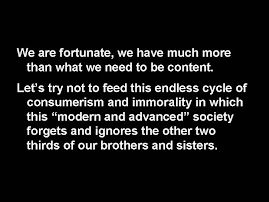Panchayati Raj
________________________________________
Dear students, go through this presentation on our India,s richest peculiar legislation. Take advantage of these knowledge.
Panchayat Raj is an ancient institution as antique as India. In fact, it has been the backbone of Indian villages since the beginning of recorded history. Gandhiji dreamt of every village a republic under the Panchayat Raj system of local self-government administered by a council or 'Panchayat' duly elected by the people of the villages in a democratic manner. The institution o Panchayati Raj is specifically designed for rural population to take care of the problems of rural areas. It provides the administrative apparatus for implementation of the programmes of rural development.
The basic objective Panchayati Raj is to evolve a system of democratic decentralization and devolution of people with a view to ensuring rapid socio-economic progress and speedier and inexpensive justice.
The Panchayat Raj system has a three-tier structure, viz, (i) the Village Panchayatas, (ii) the Panchayat Samitis and (iii) the Zila Parishad.
(i) The Village Panchayatt or Gram Panchayat : The village panchayat or the gram Panchayat functions at the Village level.
(ii) Panchayat Samiti : The panchayat samiti is the main executive body which operates at the block level.
(iii) Zila Parishad : The Zila Parishad functions at the districts level and is responsible for making executing and coordinating the programmes of rural development for entire district.
The Panchayats will have the power and authority to draw of plans within the framework of guidelines and conditions to be laid draw by the state Government. These plans will constitute the basic inputs for the planning process of higher levels. This will ensure that the voice of the people, their needs, their aspirations, their priorities become the building blocks of the edifice of planning. The second major responsibility of the Panchayats will be the implementation of development schemes assigned to them by the state Governments. These schemes should cover the major economic concerns of rural India, commencing with agriculture and land improvement and going on to irrigation. They must comprise the diversification of the rural economy into animal husbandry, dairying, poultry and fisheries. They must incorporate industrial activity in rural India. They must look to the day-to-day concerns of rural India, housing, drinking water, fuel and fodder.
The panchayats will also have the major responsibility for the administration of poverty-alleviation programmes. They would have to look to the education and culture, to health and family welfare, and to women and child development. Social welfare programmes for the weaker and handicapped sections would be the responsibility of the Panchayats. It is also proposed to give to the Panchayats the responsibility for the public distribution system which is so crucial to the survival of the weakest and the poorest, as also to the general health of the rural economy.
In this way development will be taken to the grassroots in rural India. The same concern must be extended to the growing urban and semi-urban population of the country. To this end, a new chapter has been added to the constitution. Urban Municipalities and corporations have been brought within the two major questions have been raised repeatedly. Most reservations become a parliament feature of the Indian economic, educational and political scene? Must social disability, with the attached stigma of being a Harijan and hence being disallowed to enter the places of worship etc. continue for all times, privileges as their counterpart in the rural areas? Efforts have also been made to recast revamp and rejuvenate the cooperative movement, which Pundit Nehru always regarded as the essential compliment to Panchayati Raj.
Our democracy has reached the stage where the full participation of the people brooks no further delay. Those who decry Panchayati Raj as an election stunt are only those whose feudal interest will be overthrown by the power reaching the people. The late Prime Minister Rajiv Gandhi said, “We trust the people. We have faith in the people. It is the people who must determine their own destinies and the destiny of the nation. To the people of India let us ensure maximum democracy and maximum devolution of power. Let there be an end to the power-brokers. Let us give power to the people.
Panchayat System in India is one of the essential institutions that evolved in the country since ancient times. The word Panchayat literally means governance by a `council of five`. Panhayat systems are often referred to as the grassroot level of democracy. It is an institution of local self government at the village level. Since ancient times, in India a sort of village council or an association of the residents of the village often consisted of village elders, herein the gram sangha or the Panhayat performed distinct administrative and judicial functions. Manu smriti or code of Manu has reference of Gram Sangha. Gram Sangha also finds importance in the epics such as Mahabharat and Ramayana. Moreover, Kautilya`s Arthashastra and Nitishastra of Sukracharya also contain mention of the Gram Sangha or Sansad.
Ancient India was predominantly an agricultural society and the basic unit was the self governing system. The villages were governed by their elected Panchayats. Every year the Panchayats were elected. In addition to that, during Buddhist period, there were regional councils or janapadas, city councils or Nagara Sabhas as well as Paura Sabhas and the village assemblies or Gram Sabhas. The Paura Sabhas were presided over by a leading citizen. Panchayat System in India throughout the period of Mahabharat included Paura Sabhas and janapadas who provided to put check on the arbitrary authority. Simultaneously with the monarchial form of government in India, the Panchayat system prevailed.
Advent of British rule contributed mammoth changes in the Indian society. Panchayat System in India advanced with a relatively new meaning. The term `panchayat raj` originated during the British administration. It was a decentralized form of Government where each village was responsible for its own affairs. This system of the Panchayat was adopted by state governments during the 1950s and 60s. Moreover, the Amendment Act of 1992 provides provision for delegation of powers and responsibilities to the panchayats. The panchayats are important in the Indian society for preparation of plans for economic development and social justice and also for implementation in relation to twenty-nine subjects listed in the eleventh schedule of the constitution.
At present Panchayat System in India comprise of districts which are the principal subdivision within the state. These districts are further subdivided into taluqs or tehsils areas that contain about 200 to 600 villages. The taluqdar or tehsildar is the chief member of the taluq revenue department and is the preeminent official at this level. Article 40 of the Constitution announces about panchayati system in India. These Panchayats serve as institutions of local self-government. There are recommendations; the popularly elected village council (gram panchayat) is the basic unit. Village council chairs, elected by the members of the village council, serve as members of the block council (panchayat samiti). The district council (zilla parishad ) is the top level of the system. Its jurisdiction includes all village and block councils within districts.
Panchayat System in India also refers to a council of elected members, who take decisions on issues which are important for the village social. A panchayat is thus a body of elected representatives in the village. The council leader is termed as `sarpanch` and each member is a panch. The panchayat acts as a means of expression between the local government and the people. In such a system each villager can voice his opinion in the governance of his village. In the recent times Panchayat is included in the constitution of the Government of India. This system is serving as a backbone in the present society at present.
Sunday, August 29, 2010
Tuesday, May 25, 2010
What is Global warming??
Our earth daily absorbs large quantity of solar energy from the sun. Most of this energy is radiated back to atmosphere by the earth, and this process maintains the balance of heat an energy on the earth. There are many gases present in the atmosphere, but only carbon dioxide and water vapor absorb this infrared radiation of the earth strongly and effectively block the radiation of energy back to the atmosphere. However a considerable part of it is re-emitted to the earth's surface and consequently the earth's surface gets heated up. This increase in temperature of the earth is called the Green-house effect.
The temperature effects of carbon dioxide and water vapor combine together to have a long range impact on the global climate. As the surface temperature increase, the evaporation of surface water increase, thereby raising the temperature further. It is estimated that this combined effect of rise of temperature will bring about 30 degree Celsius in surface temperature, if the carbon dioxide concentration is doubled in the atmosphere. The most alarming fact is that a slight increase in surface temperature say around 1 degree Celsius can adversely affect the world food production. As a result the wheat growing zones in the northern latitude will be shifted from USSR and Canada to the northern poles, that means from the fertile solids to the poor soils. The biological productivity will also decrease due to warming of the surface layer, which in turn reduces the transport of nutrients from deeper layers to the surface by vertical circulation.
Carbon dioxide gas, although a relatively insignificant non-pollutant gas in the atmosphere, is of serious environmental concerns. It has the potential to be compared with the nuclear wars in terms of massive irreversible damage to the environment. Increase of carbon-dioxide gas in the atmosphere is constantly occurring. Primarily through natural causes but mostly by man himself. Volcanic eruptions and forest-fire are some of the natural causes which cannot be checked. But the current global trend in deforestation, along with increase in carbon dioxide content. Forest are the areas where the green leaves efficiently utilize carbon-dioxide to make their on food. Deforestation reduces this utilization of carbon-dioxide. Consumption of fossil fuels and house-hold fuels like coal, firewood also gives off considerable amount of carbon-dioxide.
Rise in global temperatures causes many climatic changes also, but the most drastic change will be the increase in sea-level. Already, the rise in global temperatures have resulted in cracks in the Antartic ice shelf. Melting of even fraction of the volume of polar ice can result in flooding of many low lying areas around the earth. Other climate changes include floods, droughts, storms and exceptionally warm summers. Europe and American have already witnessed these changes considerably. The summer of 1998 predicted to be the warmest in the century.
Prevention is always better than cure. Human contribution and efforts can certainly prevent and control this global warming. It can be best carried out by checking atmospheric pollution. Deforestation should be stopped. Wood should be used as little as possible, because wood maintains vast reservoirs of fixed but readily oxidizable carbon. Bricks houses should be encouraged as they retain less heat. Thus they are well suited to Indian climate.
Unnecessary combustion of fuel should be checked. In houses, combustion of fuels like wood, coal, kerosene should be controlled. Instead LPG stove should be used which results in greater efficiency in fuel, utilization and less atmospheric pollution. Encouraging bio-gas plants in village communities has Multifood effect. It decreases the use of firewood, is less atmospheric pollutant and is a by-production of manure. Development of more efficient vehicles would also result in less consumption of fuel and therefore less atmospheric pollution.
Renewable sources of energy should be used as it is non-polluting and very efficient. These renewable sources of energy are solar energy and wind energy. Hydro-electricity is also of considerable use. Lastly, treatment appliances should be applied on the sources of green house gases which are carbon dioxide and methane, so that they may not violate the atmospheric balance.
The temperature effects of carbon dioxide and water vapor combine together to have a long range impact on the global climate. As the surface temperature increase, the evaporation of surface water increase, thereby raising the temperature further. It is estimated that this combined effect of rise of temperature will bring about 30 degree Celsius in surface temperature, if the carbon dioxide concentration is doubled in the atmosphere. The most alarming fact is that a slight increase in surface temperature say around 1 degree Celsius can adversely affect the world food production. As a result the wheat growing zones in the northern latitude will be shifted from USSR and Canada to the northern poles, that means from the fertile solids to the poor soils. The biological productivity will also decrease due to warming of the surface layer, which in turn reduces the transport of nutrients from deeper layers to the surface by vertical circulation.
Carbon dioxide gas, although a relatively insignificant non-pollutant gas in the atmosphere, is of serious environmental concerns. It has the potential to be compared with the nuclear wars in terms of massive irreversible damage to the environment. Increase of carbon-dioxide gas in the atmosphere is constantly occurring. Primarily through natural causes but mostly by man himself. Volcanic eruptions and forest-fire are some of the natural causes which cannot be checked. But the current global trend in deforestation, along with increase in carbon dioxide content. Forest are the areas where the green leaves efficiently utilize carbon-dioxide to make their on food. Deforestation reduces this utilization of carbon-dioxide. Consumption of fossil fuels and house-hold fuels like coal, firewood also gives off considerable amount of carbon-dioxide.
Rise in global temperatures causes many climatic changes also, but the most drastic change will be the increase in sea-level. Already, the rise in global temperatures have resulted in cracks in the Antartic ice shelf. Melting of even fraction of the volume of polar ice can result in flooding of many low lying areas around the earth. Other climate changes include floods, droughts, storms and exceptionally warm summers. Europe and American have already witnessed these changes considerably. The summer of 1998 predicted to be the warmest in the century.
Prevention is always better than cure. Human contribution and efforts can certainly prevent and control this global warming. It can be best carried out by checking atmospheric pollution. Deforestation should be stopped. Wood should be used as little as possible, because wood maintains vast reservoirs of fixed but readily oxidizable carbon. Bricks houses should be encouraged as they retain less heat. Thus they are well suited to Indian climate.
Unnecessary combustion of fuel should be checked. In houses, combustion of fuels like wood, coal, kerosene should be controlled. Instead LPG stove should be used which results in greater efficiency in fuel, utilization and less atmospheric pollution. Encouraging bio-gas plants in village communities has Multifood effect. It decreases the use of firewood, is less atmospheric pollutant and is a by-production of manure. Development of more efficient vehicles would also result in less consumption of fuel and therefore less atmospheric pollution.
Renewable sources of energy should be used as it is non-polluting and very efficient. These renewable sources of energy are solar energy and wind energy. Hydro-electricity is also of considerable use. Lastly, treatment appliances should be applied on the sources of green house gases which are carbon dioxide and methane, so that they may not violate the atmospheric balance.
Subscribe to:
Comments (Atom)


